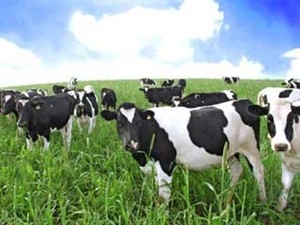World Markets

The percentage of acres, nationally, in those two lowest categories fell from 44 per cent to 42 per cent. That compares to 25 per cent last year and an average of 32.4 per cent during 2005-09.
But conditions in the Southern Plains remained very, very bad last week in spite of improving three per cent. 93 per cent of Texas and Oklahoma pastures remain rated as in poor or very poor condition and it is almost certainly too late to see any marked improvement until spring.
Several areas have received rain over the past few weeks but the rains, while welcome, have not been nearly enough to end drought conditions.
These dry conditions have another impact on pasture and feeding practices in their influence on wheat planting, wheat pasture and, ultimately, the supply of hard red winter wheat next summer.
USDA reported that 26 per cent of total winter wheat acres had been planted as of 25 September. That is an 11 per cent gain for the week but leaves planted acres six per cent behind the same date last year and nine per cent below the 10-year average.
Both Texas and Oklahoma gained during the week to reach 14 per cent and 11 per cent planted, respectively. But those numbers are far behind the normal levels of 34 per cent and 28 per cent for the two states. Growers in both states are still concerned about the amount of moisture available.
While surface moisture has been helped with recent rains, there is little available below the first few inches putting seedlings at risk if more rain is not received soon.
Many are simply opting to wait to plant. Depending on the specific area, cattle usually begin to move to wheat pasture in October with the shift increasing in November.
Delayed planting will limit the number of cattle that can go to wheat pastures unless conditions improve soon.
If more information is better, we are now officially all “better off” regarding pre-report crop data estimates.
The table below shows the results of surveys by three wire services regarding analysts’ estimates of corn, soybean and wheat inventories as of 1 September.
We have indicated the number of survey respondents for both Dow Jones and Reuters. Bloomberg’s release did not list the number of respondents by crop, saying only that “as many as 24” analysts responded to the various categories.
The 1 September inventories of corn and soybeans represent the year-end inventories for those crops since their crop year runs from 1 September to 31 August.
These estimates indicate that year-end corn stocks will be at their lowest level since 1997 when there were 883 million bushels in storage at year end. Of course total corn usage in 1996-97 was 8.79 billion bushels where total usage this year will be 13.265 billion.
The year-end stocks/use ratio this year will be a just over half as large as that of 1997.
The estimates also point to the largest year-end soybean stocks since 2007 and the smallest 1 September wheat stockpiles in three years.
Obviously, the three surveys gather much of their data from the same survey respondents though there are some that are unique to the various wire services


Further Reading
You can view the full report by clicking here.





















